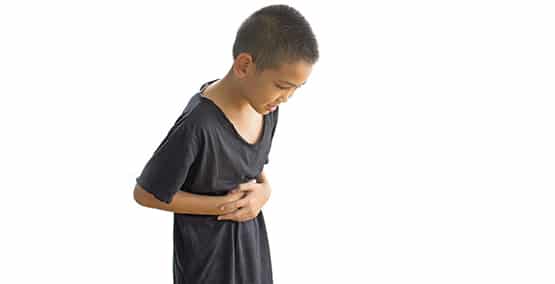
Understanding eosinophilic disorders
by Dr. Seth Marcus, Medical Director of the SouthEast Eosinophilic Disease (SEED) Center

What is Eosinophilic Esophagitis?
Eosinophilic Esophagitis (EoE) is an increasingly common allergic disorder of the esophagus. Currently, 1 in every 2000 people have this condition. That's 10 times as many people today compared to 20 years ago. In fact, the number of new cases each year is similar to that of Inflammatory Bowel Disease, including Crohn's Disease and Ulcerative Colitis.
Children (and adults) with Eosinophilic Esophagitis (EoE) often have trouble swallowing. They can even have food stuck in their esophagus. Choking, picky eating, abdominal pain, chest pain or vomiting can also be symptoms. As a result, people with EoE may limit foods to those foods that are easy to swallow.
Is it Acid Reflux?
EoE often seems like acid reflux, with patients complaining of chest pain and difficulty swallowing. However, in acid reflux, the esophagus is injured by acid escaping from the stomach. On the other hand, in EoE, the esophagus is injured by food and/or environmental allergies. These allergens trigger the immune system to mount an inflammatory response in the esophagus. and acid reflux are very different conditions. In acid reflux, the esophagus is injured by acid coming up from the stomach. In EoE, the esophagus is injured by food and/or environmental allergens. The allergens trigger the immune system to respond by mounting an inflammatory response in the esophagus. As a result, it causes swelling of the esophagus and results in a patient's symptoms.
Just as eczema and asthma can be allergic conditions of the skin and lungs, EoE is an allergic condition of the esophagus. In fact, we often think of EoE as "eczema of the esophagus" and treat it with diet and/or medicines traditionally used for asthma. What's amazing is that the rest of the gastrointestinal system is not involved.
Diagnosing EoE
An upper endoscopy is the only reliable test for EoE. The proof is in the tiny pinch biopsies from the lining of the esophagus that show inflammation and the presence of eosinophils (a type of white blood cell that helps the immune system).
Does it Get Better?
Like eczema or asthma, patients do not outgrow EoE. It can get better with treatment, but inflammation will likely return if treatment is stopped. Interestingly, we have seen that most people with EoE have a family history of other people experiencing similar symptoms. Fortunately, safe and effective medications and/or dietary changes help most children live a normal life and return to their usual activities.
Eosinophilic Gastritis and Gastroenteritis
While EoE seems to be increasing , Eosinophilic Gastritis and Eosinophilic Gastroenteritis are rare diseases. In these conditions, eosinophils (type of white blood cell that is increased in allergic conditions), increase in the lining of the stomach or the stomach and intestine. In these conditions, the esophagus is usually not involved.
The eosinophils signal that there is a problem and leads to abdominal pain, nausea, vomiting, diarrhea, weight loss and / or poor growth. Some patients may become anemic, have fatigue and aren't able to perform well at school or participate in their activities. Other patients may present with malnutrition and have low protein and vitamin levels.
The adults and children with this disease may also have environmental and/or food allergies. Food allergies may have an important role in triggering the disease and also make it harder to treat.
Diagnosing the condition usually includes blood tests, allergy studies, upper endoscopy and often a colonoscopy. Tiny pinch biopsies from the lining of the esophagus, stomach and intestine are viewed under a microscope to look for the presence of eosinophils.
Treatment for Eosinophilic Gastritis or Gastroenteritis is centered on diet and medications to reduce inflammation, protect the stomach and intestine and reverse nutrient losses. This often takes a team of physicians, a dietitian and occasionally a psychologist. The goal is to maintain a healthy diet, correct nutrient deficiencies and bring your child to his optimal health so that he or she can return to a normal life.
Additional Information Support networks and resources are available for families affected by Eosinophilic Gastrointestinal Disease (EGID). The SEED Center of Atlanta, Inc (www.seedcenteratl.org), The American Partnership for Eosinophilic Disorders (www.apfed.org), the North American Society for Pediatric Gastroenterology, Hepatology and Nutrition (www.naspghan.org), the Food Allergy and Anaphylaxis Network (www.foodallergy.org), and GAeos.org (www.gaeos.org) can help you understand these conditions and guide you to available support and resources that will help your child and family thrive.




